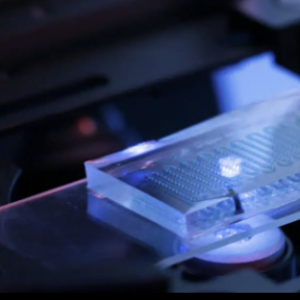
Microfluidics: The Future of Biology in a Chip
Microfluidics: The Future of Biology in a Chip
Imagine a laboratory the size of a smartphone chip. Inside it, liquids flow through channels thinner than a human hair, carrying cells, proteins, and DNA. Experiments that once required large benches of equipment can now take place on a device that fits in your hand. This is the promise of microfluidics, a rapidly growing field at the intersection of engineering and biology.
At its simplest, microfluidics is the science of controlling fluids at the microscale. Just as electrical engineers manipulate electrons on a circuit board, bioengineers design chips with tiny channels to guide liquids. These channels can mix chemicals, separate cells, or trap microorganisms. By precisely controlling conditions, scientists can recreate miniature versions of biological processes, often with remarkable accuracy.
One of the most powerful uses of microfluidics is in studying microbes and cells. For example, when scientists want to understand how bacteria interact with each other in a host, microfluidic devices allow them to confine bacteria in specific patterns and observe their growth. In studies with C. elegans, researchers can use microfluidic chips to hold the worms in place, change their environments instantly, and watch how their gut microbes respond.
The advantages of this approach are enormous. Microfluidics requires only tiny volumes of liquid—microliters instead of milliliters—making experiments faster, cheaper, and more environmentally friendly. The chips are also highly customizable. Using methods like photolithography and soft lithography, researchers can design devices with channels and chambers shaped for specific experiments. A chip might mimic the blood vessels of a human, or it might simulate the gut of a worm.
Beyond academic labs, microfluidics is transforming healthcare. “Lab-on-a-chip” technologies are being developed for quick diagnostics, such as testing for infections, monitoring blood glucose, or even detecting cancer cells. During the COVID-19 pandemic, microfluidic technologies helped accelerate testing methods by allowing rapid analysis of viral samples. In the future, a doctor’s office might carry out complex lab tests on a disposable microchip in minutes.
Microfluidics is also exciting for students because it demonstrates the power of cross-disciplinary thinking. It combines principles of physics, chemistry, engineering, and biology. It shows how something as technical as fluid dynamics can directly impact human health and environmental sustainability.
Perhaps the most inspiring part of microfluidics is its scale. Working at the microscale makes us rethink what’s possible. It’s a reminder that big discoveries don’t always require big machines—sometimes they come from channels smaller than a strand of hair, guiding droplets of liquid in ways that can change science, medicine, and even everyday life.
In the end, microfluidics is not just about shrinking the lab—it’s about expanding possibility. With biology in a chip, the future of science may well fit in the palm of your hand.
PO-CHENG OU